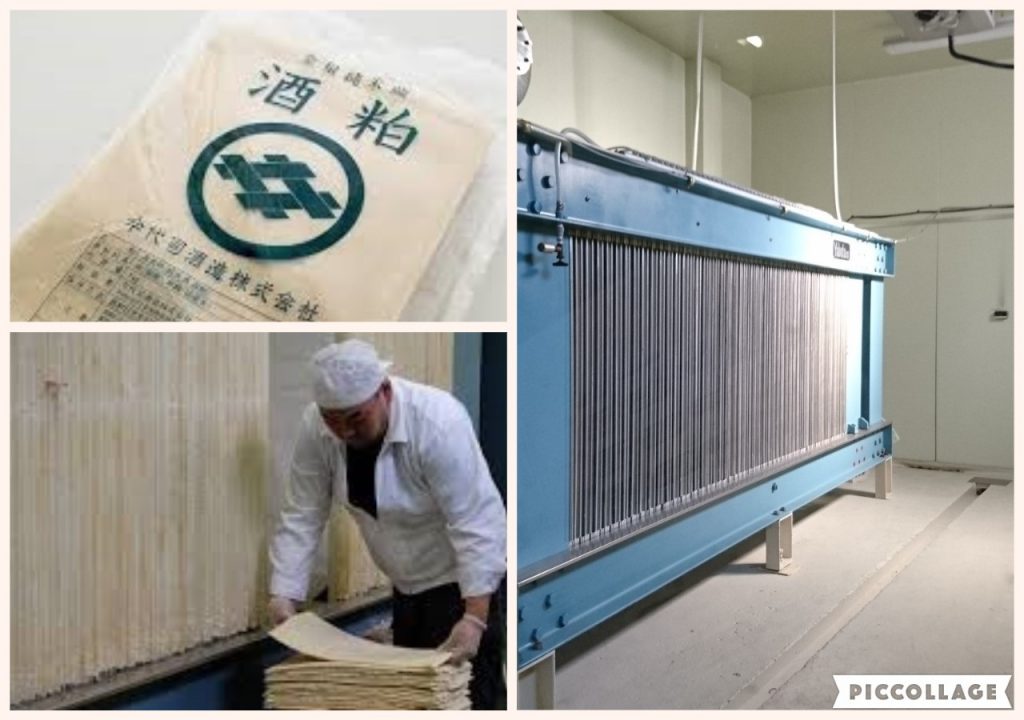BLOG
Sake Pressing in Modern Day
2018.02.22
Hi everybody. I wrote this blog in December, which means there is a lot of focus on pressing sake. Unless you are a really big sake brewery that brews year-round, the brewing schedule looks something like this:
————————————————–
September: Rice is harvested
October: Start making starter mash
November: Brew mash in large tanks
December: Pressing and bottling sake
January: Start making the next batch of starter mash
February: Brew mash in large tanks
March: Pressing and bottling sake
April: Next season’s rice is planted
What does it mean for sake to be pressed? When the sake first leaves the tank, it is a thick, white mash. In order to make the clear (or at least thinner white sake in the case of nigori), the mash must be pressed through a cloth, straining it of its solids.
Years ago, when the first sake “pressing” took place, the mash was poured into canvas bags and hung, allowing the liquid to drip out, with the solids being strained and confined in the bag.
As sake-making techniques continued to evolve, simple machinery was introduced. Some brewers piled canvas bags of sake into a large wooden box with a hole at the bottom known as a fune (foo-nay).
Pressure could be applied to the bags to force the liquid out of the canvas bags and through the hole at the bottom of the box.
In current-day, we use a large machine known as Yabuta press at Imayo Tsukasa. In fact, 90% of sake breweries in Japan do. Practically, it works in a similar way as the fune. Long, wide, flat canvas bags surround a set of panels that hang in a large steel box. The panels are surrounded by canvas bags. Through the panels, the canvas bags are filled with sake mash, and the panels close together by a hydraulic press. A balloon inside each panel inflates, applying pressure on the mash. This makes flat rice cakes out of the solids in the mash, and the liquid escapes to the bottom, and out of the machine.

This allows us to press a lot of sake in a short amount of time. The sooner we get it out and ready, the better!
Now, what do we do with the sake lees? We get commissioned by companies that want to use them in baking and cooking and pickling. We cut them up into rectangles and package them (see above) for people to come purchase from our shop. We also have beauty facemasks available in our shop that contain sake lees as a cosmetic. Many people like to make amazake from them by mixing sake lees with sugar and water. We can even toast thin strips of them and put it on a sandwich!
The important thing to remember is in the sake making process, nothing goes to waste! next time you are in Japan, be sure to visit us at Imayo Tsukasa and see if you like this cool byproduct of delicious sake.